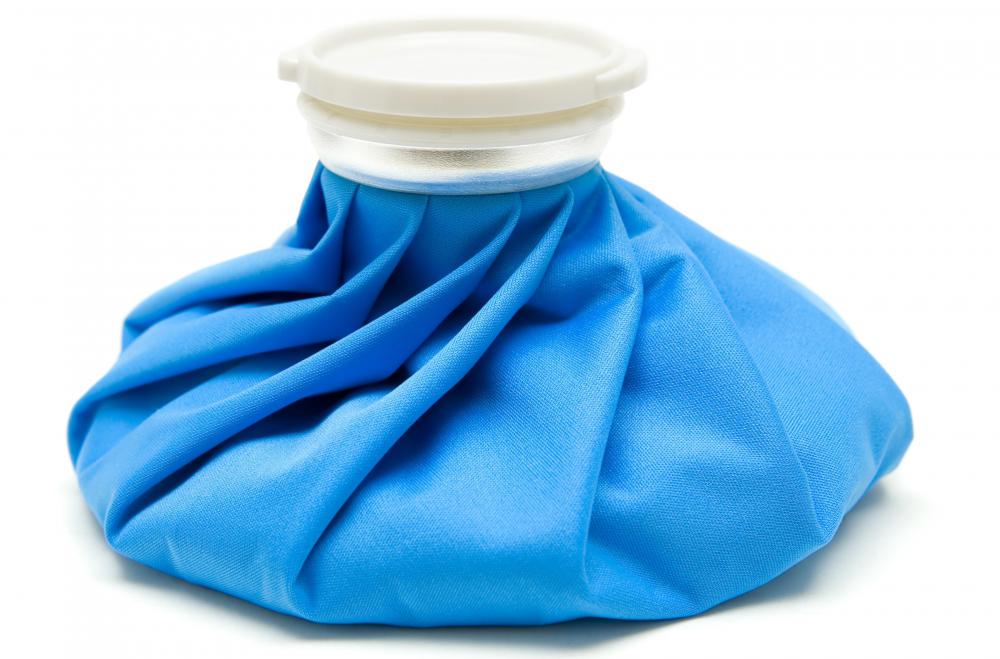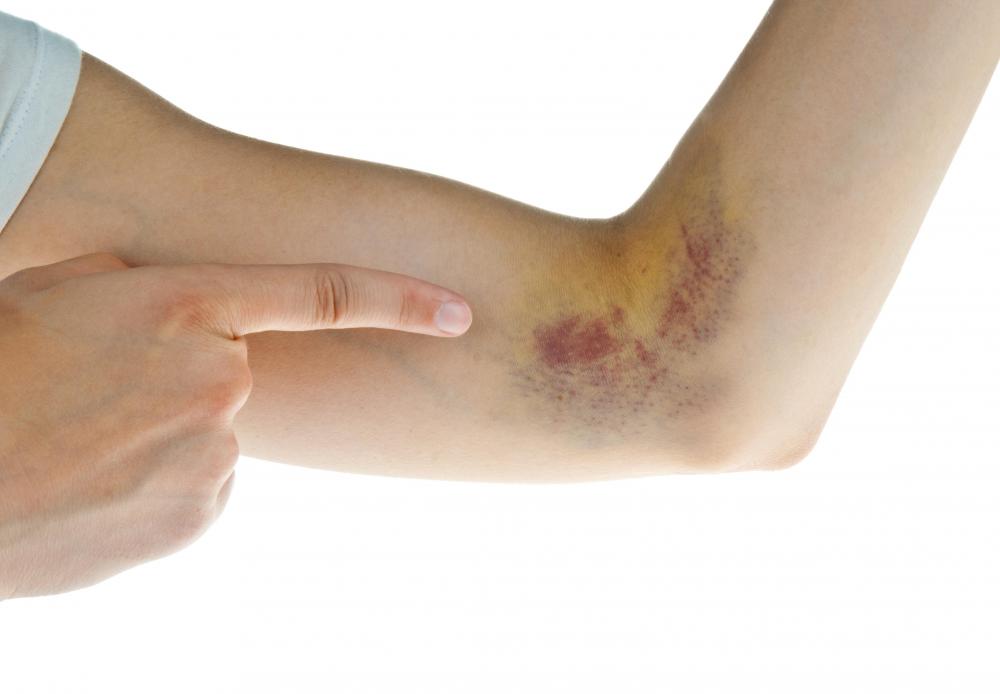At TheHealthBoard, we're committed to delivering accurate, trustworthy information. Our expert-authored content is rigorously fact-checked and sourced from credible authorities. Discover how we uphold the highest standards in providing you with reliable knowledge.
What Are the Symptoms of Bruising?
Most people recognize common bluish or black patches of skin as bruises, which are typically not serious. Bruises are generally caused by some trauma that ruptures blood vessels just under the skin. Skin discoloration is one of the most common symptoms of bruising. Pain and swelling also usually accompany this discoloration. Generally, most bruises can be treated at home, with rest and ice.
Blunt force trauma is typically the most common cause of a bruise. When a blunt object strikes the skin, it will often rupture small blood vessels beneath the surface of the skin without breaking the skin. This can cause blood to pool underneath the surface of the skin, which can cause discoloration.
Discoloration is one of the first symptoms of bruising. The skin will usually be pink or red when it is first struck. Shortly afterward, this area will usually turn blue or purple. As the bruise heals, it will often fade to yellow or brown.
Pain and tenderness are also common symptoms of bruising. Most bruises are typically painful or tender, especially when pressure is applied to the area. If a bruise is on or near a joint, a person may also have limited mobility in the area.
Swelling can also occur in conjunction with a bruise. This usually occurs because of the pooled blood underneath the skin. It will usually go down within a few days.

The symptoms of bruising can usually be treated at home. Ice can be applied to an injured area to help prevent bruising. Although this will not always completely stop a bruise from forming, it can help minimize its appearance. Ice packs should not be placed directly against the skin or kept on for too long, since this can cause tissue damage. Instead, an ice pack should be wrapped in a towel and only applied to the bruised area for about 15 minutes at a time.

Applying ice to a bruise can help reduce swelling in the area as well. Swelling can also be reduced by raising the affected area above the level of the heart, so blood and other fluids don't pool in the area. Over-the-counter anti-inflammatory medications can help reduce some symptoms of bruising, including swelling and pain.
When the symptoms of bruising are severe, it may be necessary to seek medical attention. In some cases for instance, swelling can become so severe that it can cut off the circulation to major blood vessels. A person who bruises easily or without reason should also seek a doctor's opinion, since easy bruising can be caused by an underlying medical condition.
AS FEATURED ON:
AS FEATURED ON:















Discuss this Article
Post your comments